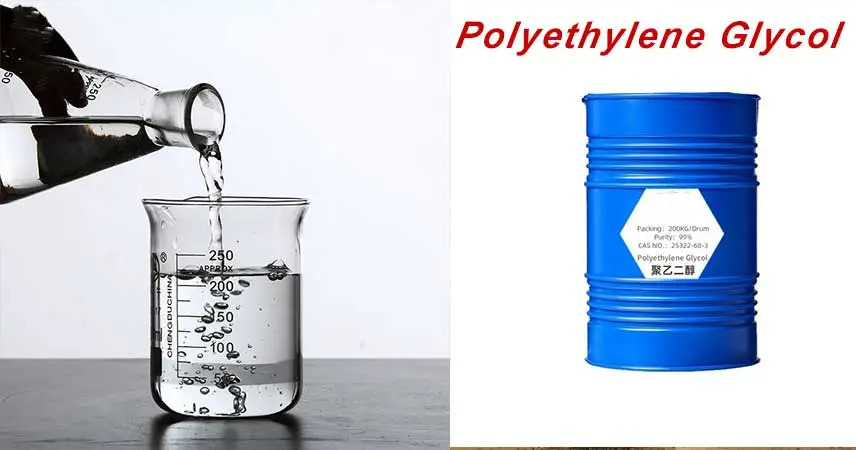- +86 15330037994
- Market@junauschem.com
- B101,Building 9,No.34,Yu’an Road,Shunyi District,Beijing
About Polyethylene Glycol (PEG), it is a synthetic polyether compound composed of repeating ethylene oxide units. Its chemical formula is typically written as HO−(CH₂CH₂O)ₙ−H, where “n” denotes the number of ethylene oxide units, determining its molecular weight and physical properties. PEG is water-soluble, non-toxic, and biocompatible, making it a cornerstone material in pharmaceuticals, cosmetics, and industrial processes. Depending on its molecular weight, PEG can exist as a liquid, semi-solid, or waxy solid, offering flexibility for tailored applications.

About Polyethylene Glycol classifications, the polymer is categorized based on its molecular weight (MW), which directly influences its viscosity and functionality:
Low MW PEG (200–600 Da): Liquid at room temperature, used as solvents, lubricants, or excipients in topical creams.
Medium MW PEG (1,000–10,000 Da): Semi-solid or paste-like, commonly employed in ointments and pharmaceutical coatings.
High MW PEG (>10,000 Da): Solid waxes, ideal for industrial applications like plasticizers or tablet binders.
About Polyethylene Glycol’s versatility, its applications span numerous industries:
Pharmaceuticals:
As a laxative (e.g., PEG 3350 for bowel preparation).
Drug delivery systems (e.g., PEGylation to enhance protein stability).
Excipient in tablets and vaccines, including mRNA COVID-19 vaccines.
Cosmetics and Personal Care:
Moisturizers, shampoos, and toothpaste for its humectant properties.
Thickening agent in gels and creams.
Industrial Uses:
Lubricants in machinery and textiles.
Binders in ceramics and adhesives.
Anti-foaming agents in food processing.
PEG’s biocompatibility has revolutionized biomedical engineering. It is used to modify surfaces of nanoparticles, reducing immune recognition and prolonging circulation time in drug delivery. PEG hydrogels also serve as scaffolds in tissue engineering due to their tunable porosity and biodegradability.
About Polyethylene Glycol’s safety, it is generally recognized as safe (GRAS) by the FDA for topical and oral use. However, high-MW PEG may cause hypersensitivity in rare cases. Proper handling guidelines recommend avoiding inhalation of aerosols and prolonged skin contact with concentrated forms.
About Polyethylene Glycol, its adaptability across molecular weights and industries underscores its irreplaceable role in modern science and technology. From life-saving medicines to everyday consumer products, PEG continues to drive innovation, proving that a simple polymer can have an extraordinary impact.